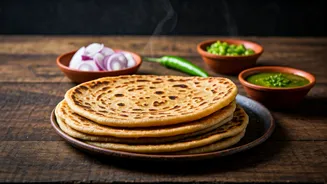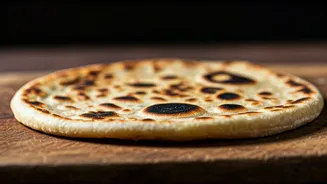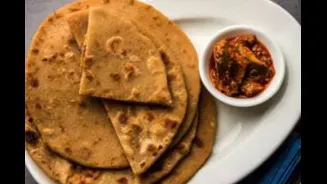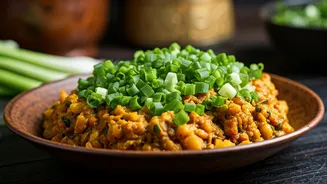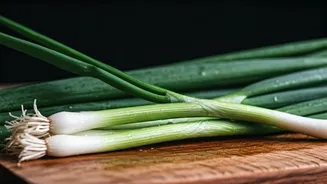Sattu Paratha Overview
Sattu Paratha, a regional specialty from the heartlands of Bihar and Eastern Uttar Pradesh, is a nourishing wintertime dish. It is crafted with a filling
of sattu (roasted gram flour) enveloped within a whole wheat dough, then expertly cooked on a tawa (griddle). This preparation delivers a comforting meal experience, often enjoyed for breakfast or lunch. Its essence is captured when served with a side of creamy yogurt, a crisp onion salad, or a zesty green chili pickle. These accompaniments not only enhance the taste but also evoke a sense of warmth and nostalgia, making it a perfect winter indulgence.
Dough Preparation Matters
The cornerstone of a perfect Sattu Paratha is, undoubtedly, the dough. Use whole wheat flour as the base. Start by gently kneading the flour with water to create a soft, pliable dough. Ensure the consistency is neither too hard nor too sticky. Allowing the dough to rest for about 15-20 minutes is key; this step relaxes the gluten, which leads to parathas that are easier to roll out and less prone to tearing. A well-prepared dough ensures the filling is encased perfectly, leading to a delightful culinary experience with every bite. The dough should be smooth and elastic, ready to embrace the flavorful sattu filling.
Crafting the Sattu Filling
The heart of the Sattu Paratha is the sattu filling, which is made with roasted gram flour. The filling is a flavorful mixture. Begin by combining sattu with finely chopped onions, green chilies, and a blend of spices such as ajwain (carom seeds), salt, and black pepper. A touch of mustard oil elevates the flavor profile, imparting a distinct aroma. Ensure the ingredients are evenly mixed to distribute the flavors. A good filling is balanced, both in taste and texture, ensuring that each bite of the paratha offers a burst of flavour.
Assembling the Paratha
Once both the dough and filling are ready, the assembly process commences. Take a portion of the dough and flatten it. Place a generous spoonful of the sattu filling in the center of the flattened dough. Carefully bring the edges of the dough together to seal the filling completely, ensuring no part of the filling is exposed. Gently flatten the filled dough with your hands, and then lightly roll it out into a paratha shape using a rolling pin. The goal is to evenly distribute the filling throughout the paratha while maintaining a manageable thickness.
Cooking on the Tawa
Heat a tawa (griddle) over medium heat. Place the rolled-out Sattu Paratha on the hot tawa. Cook the paratha, flipping it frequently, until golden brown spots appear on both sides. Add a small amount of ghee or oil while cooking to achieve the perfect texture. The paratha should puff up slightly as it cooks, indicating that the filling is being heated. Cook it for a few minutes on each side, ensuring that the paratha is cooked evenly, allowing the sattu filling to heat throughout. The final result should be a crisp exterior with a soft, flavorful interior.
Serving Suggestions
The delight of Sattu Paratha is amplified by its accompaniments. It's often served with a dollop of creamy yogurt, which adds a refreshing counterpoint to the spicy and savory paratha. A crisp onion salad with a squeeze of lemon juice provides a fresh, textural contrast. For those who enjoy a bit of heat, a spicy green chili pickle adds a fiery kick, making the experience even more enjoyable. The combination of paratha with these accompaniments transforms each meal into a comforting and nostalgic experience, especially during the colder months.
